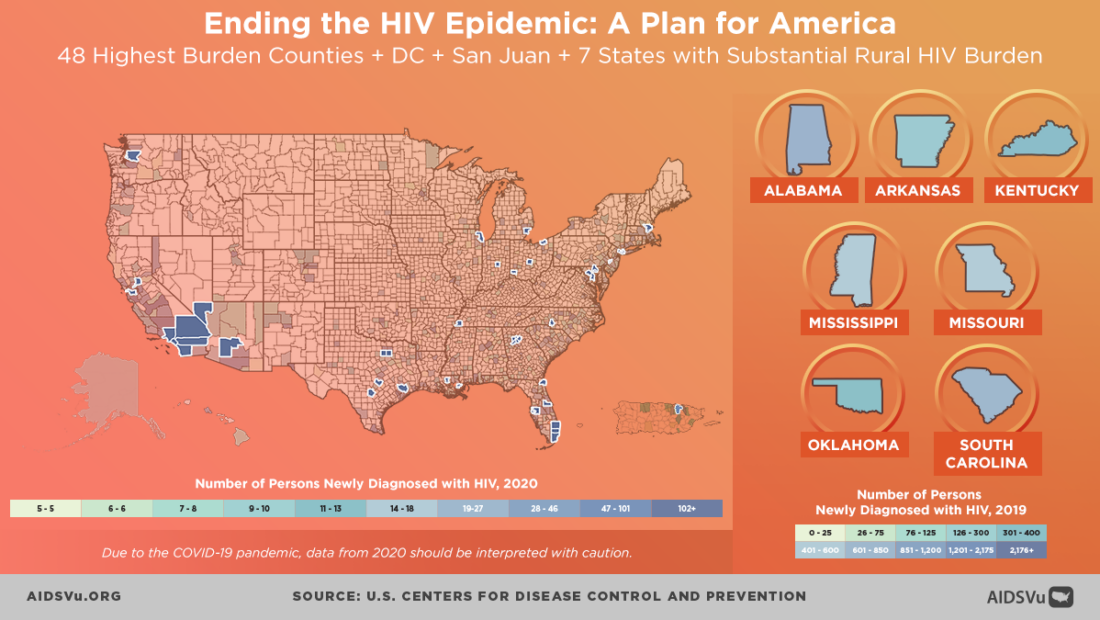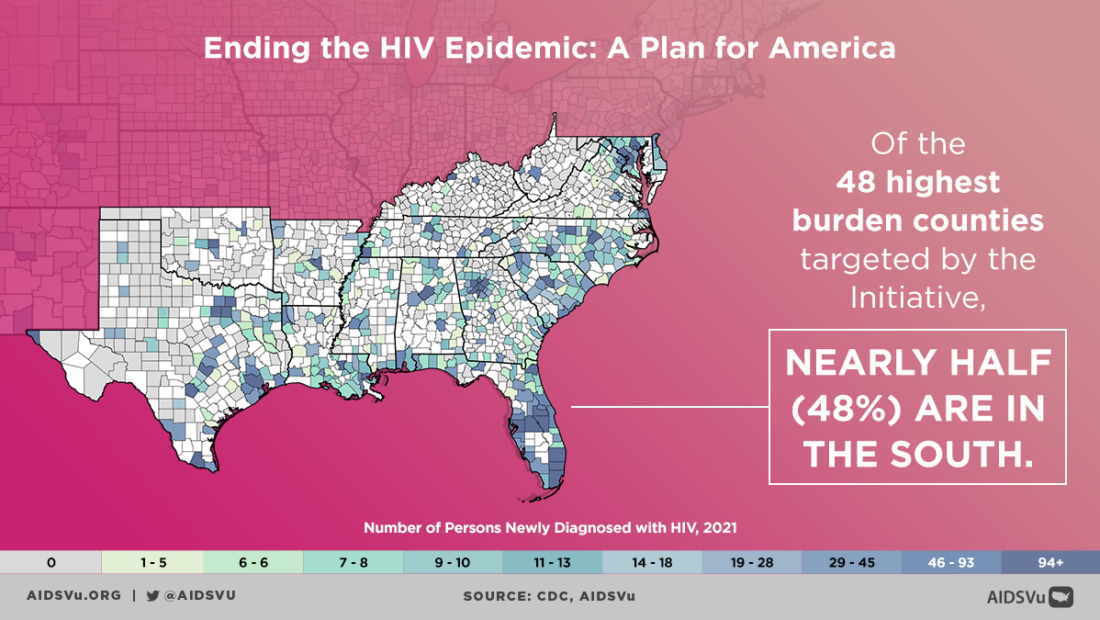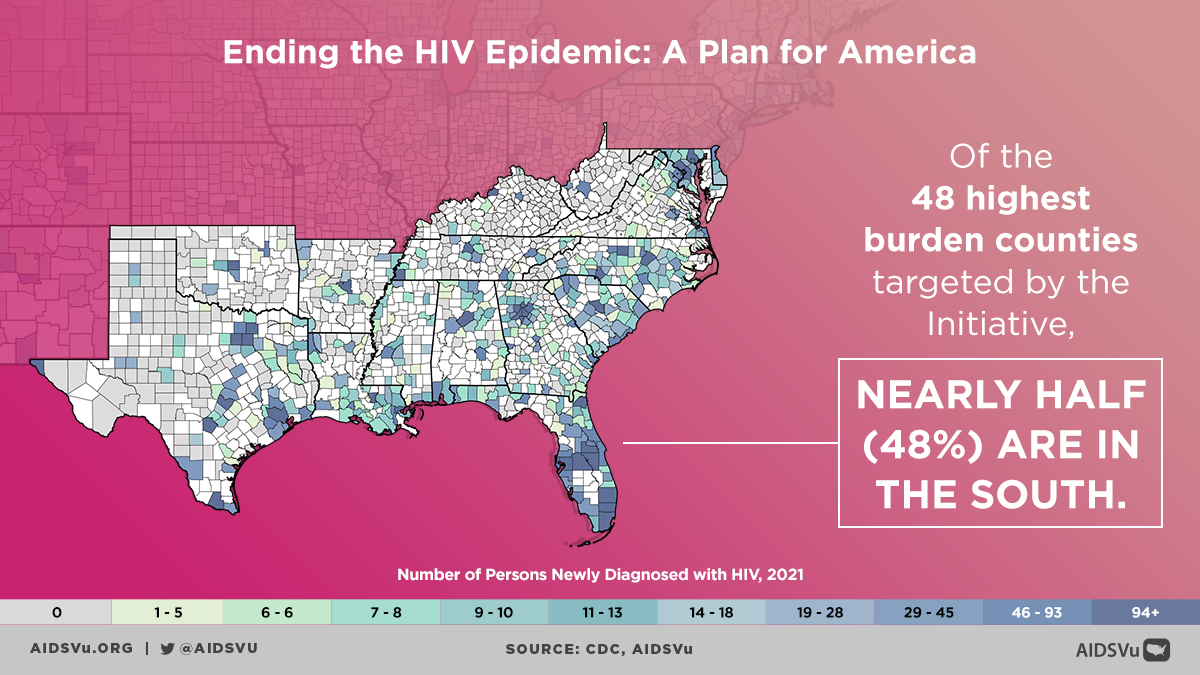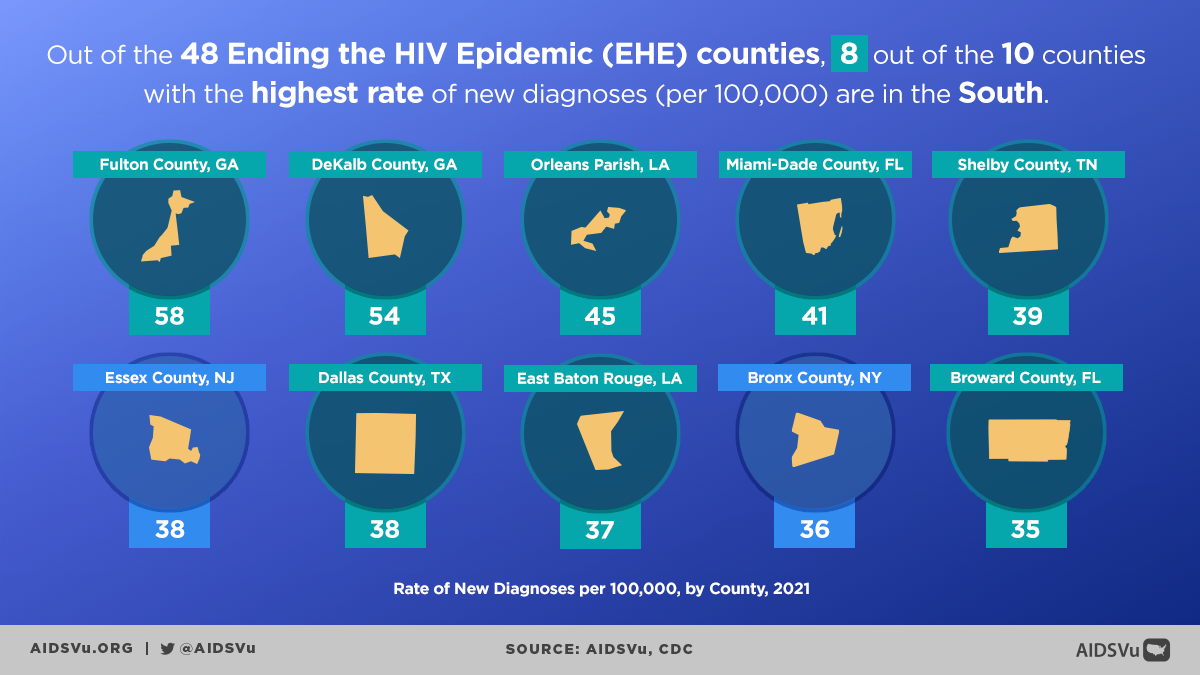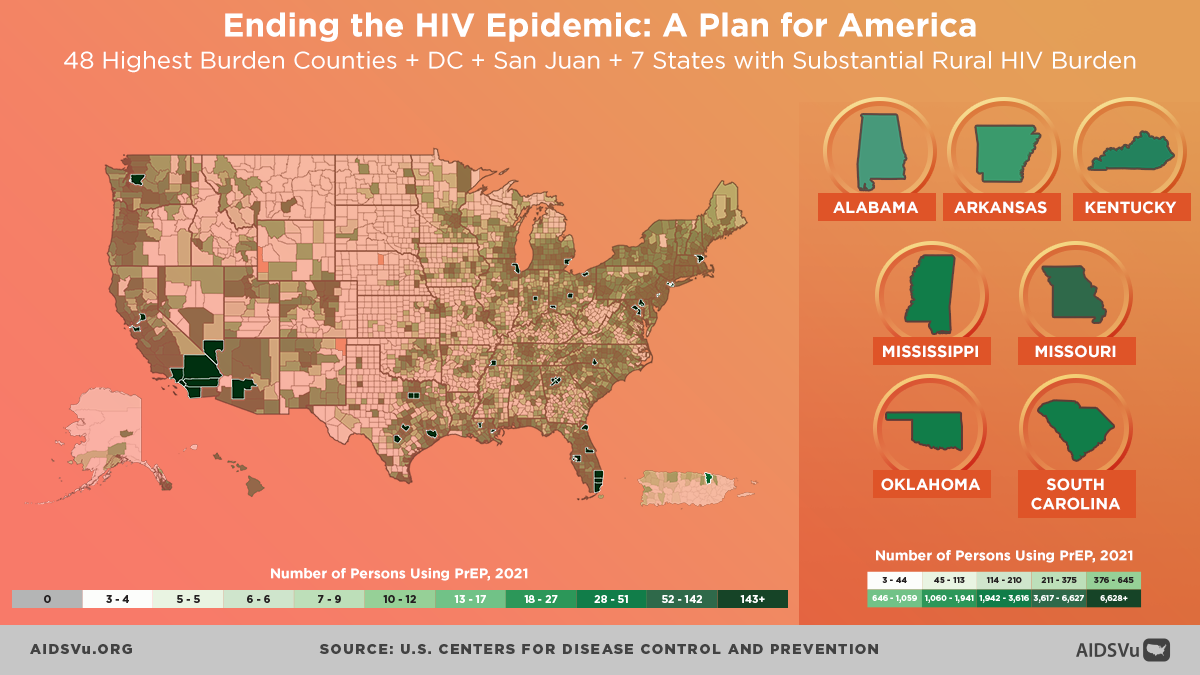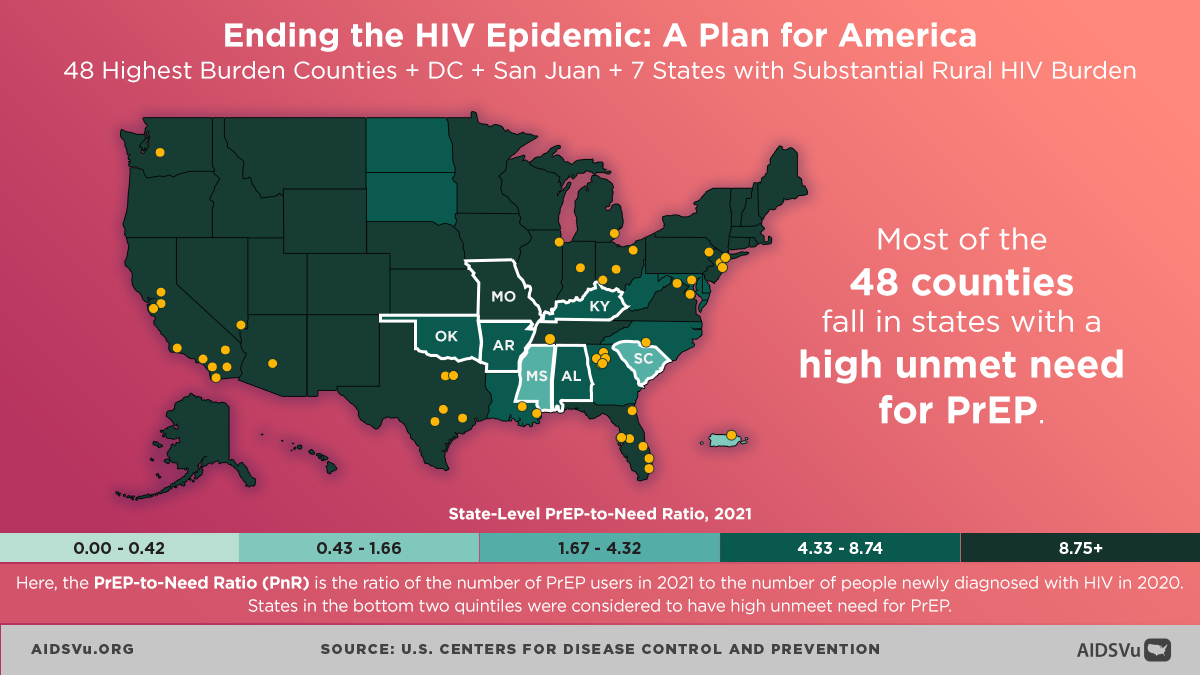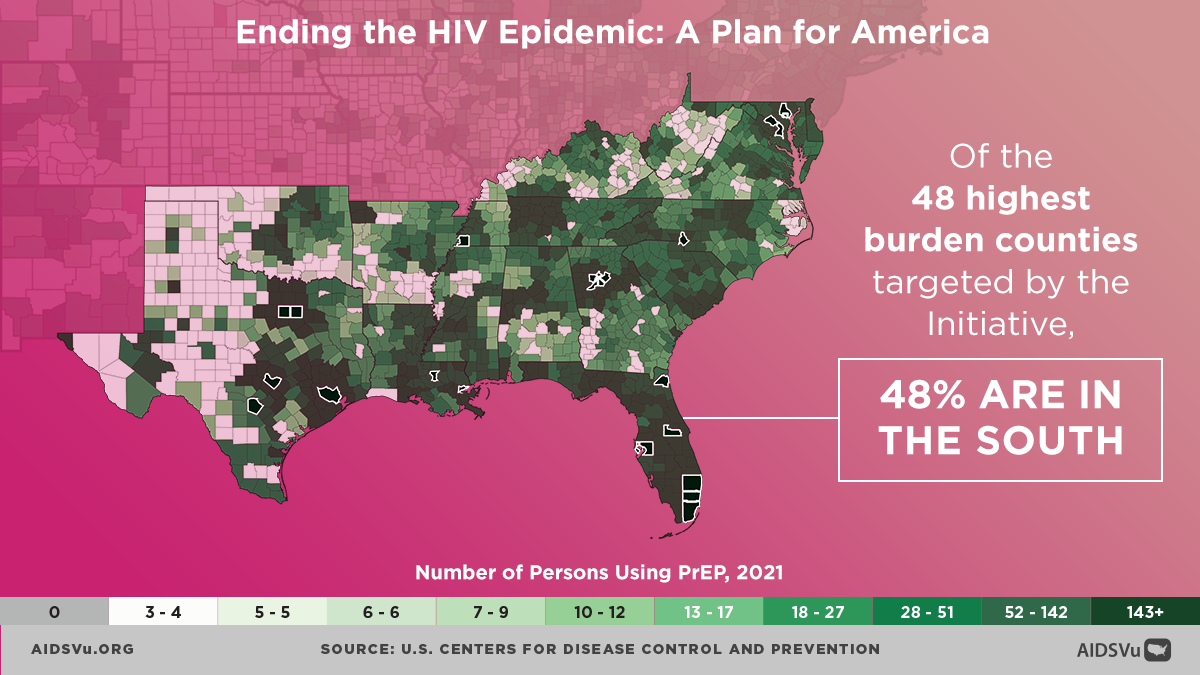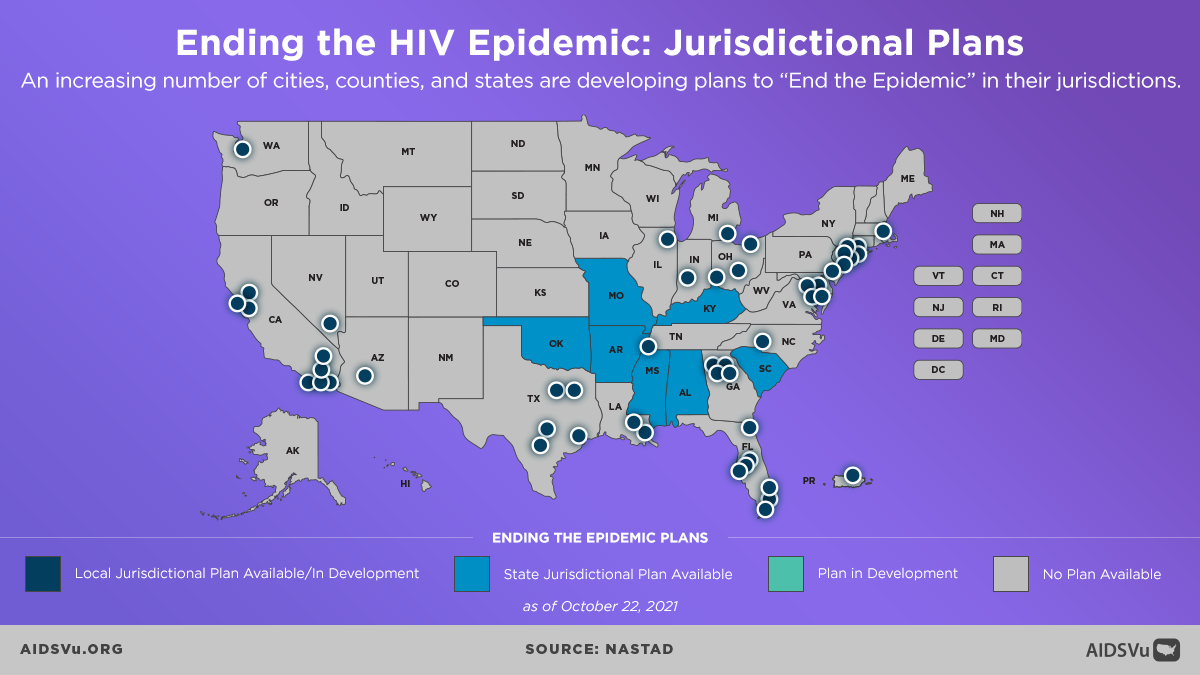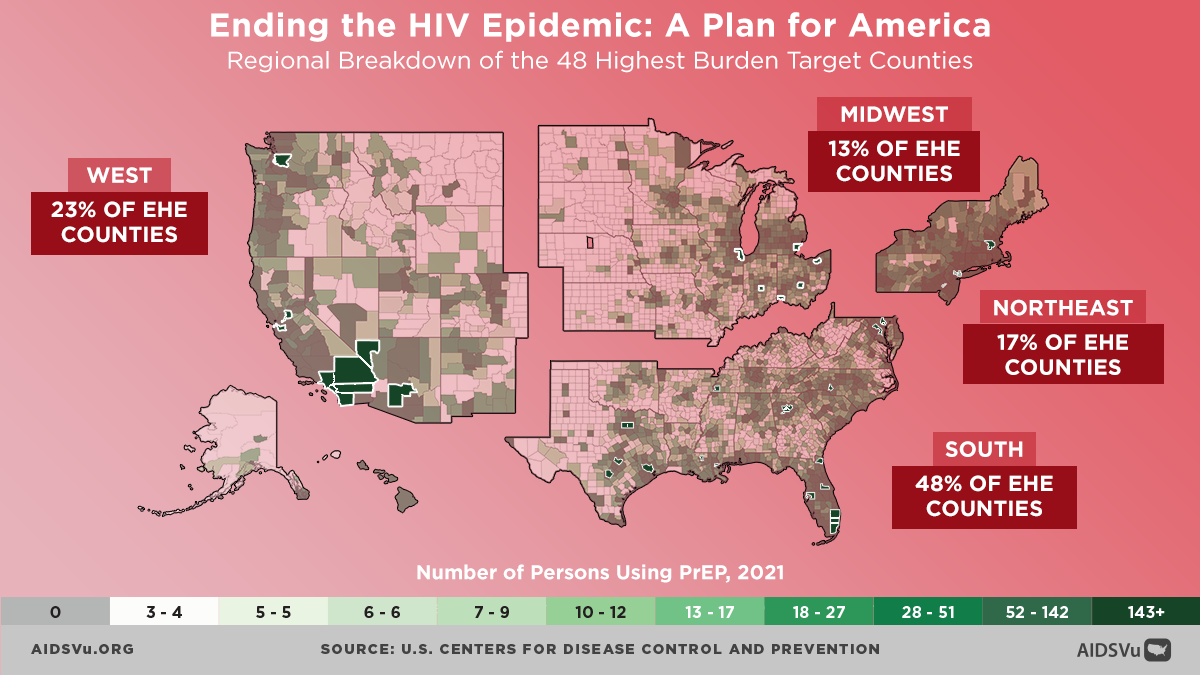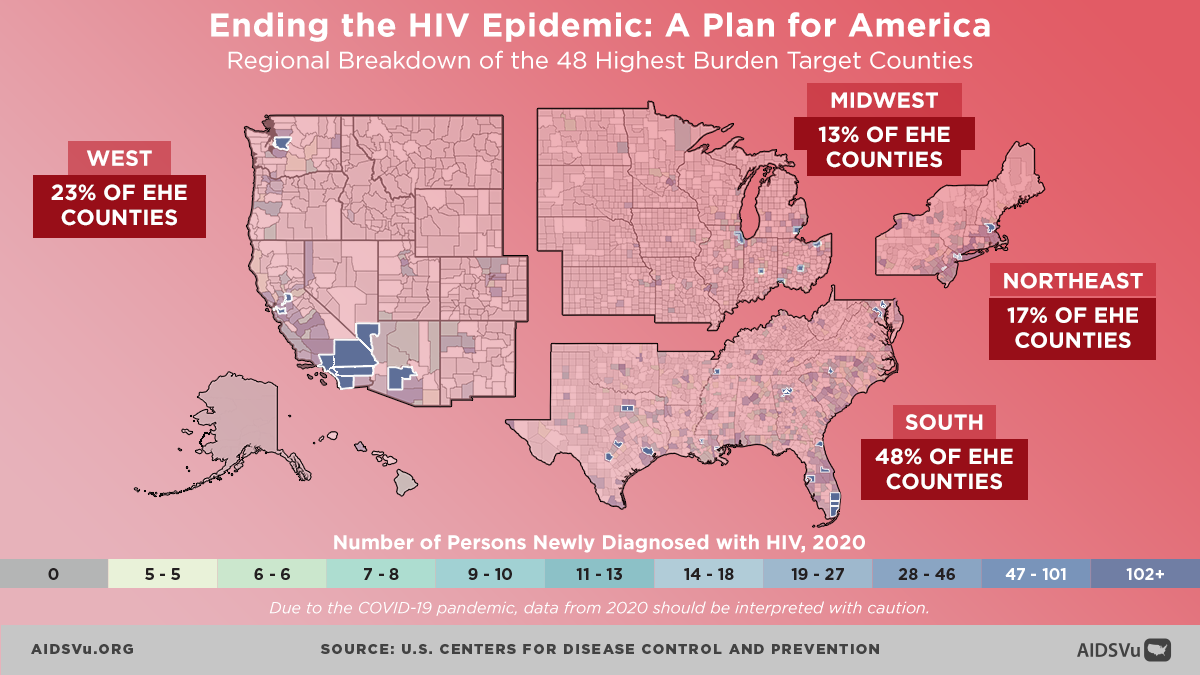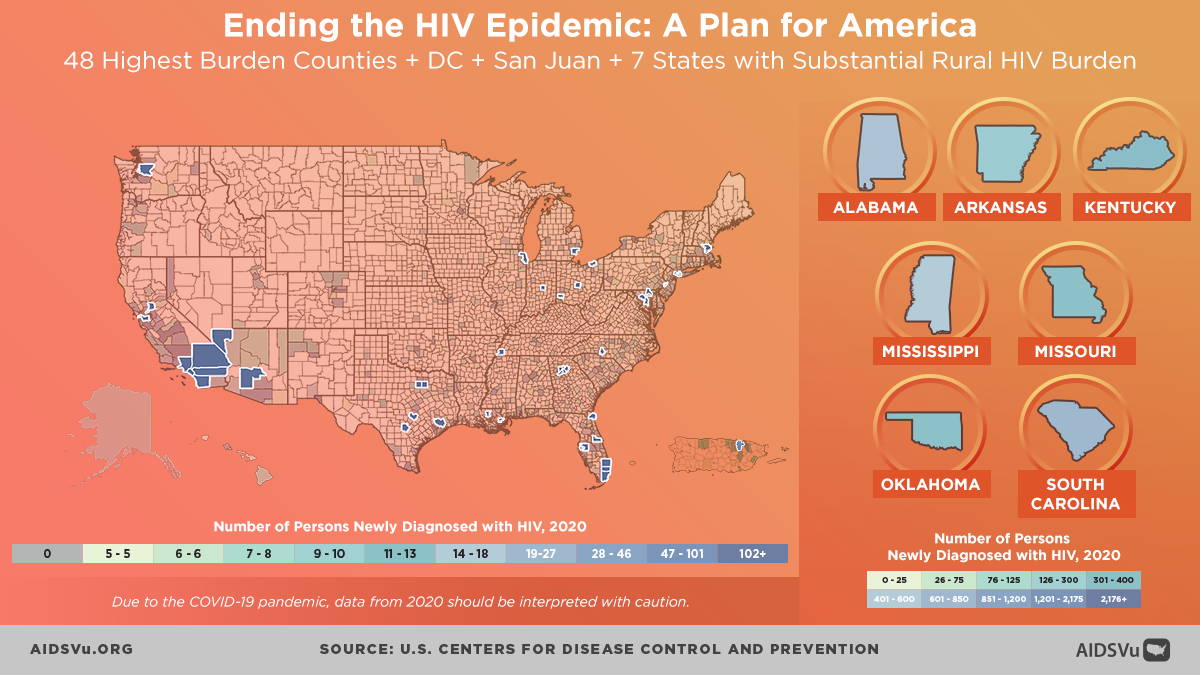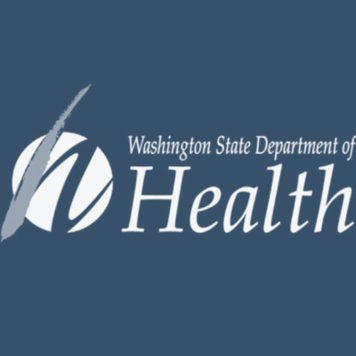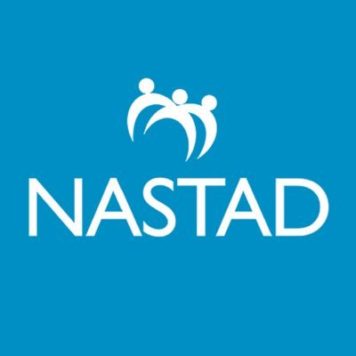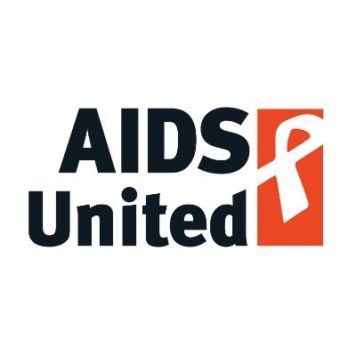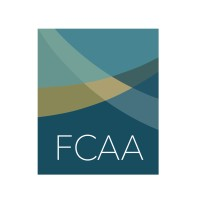Of the 48 highest burden counties targeted by the initiative, 48% are in the South.
In 63% of the 48 target counties and DC, the percent of people living in poverty is higher than the national average.
Most of the 48 target counties fall in states with a high unmet need for PrEP.
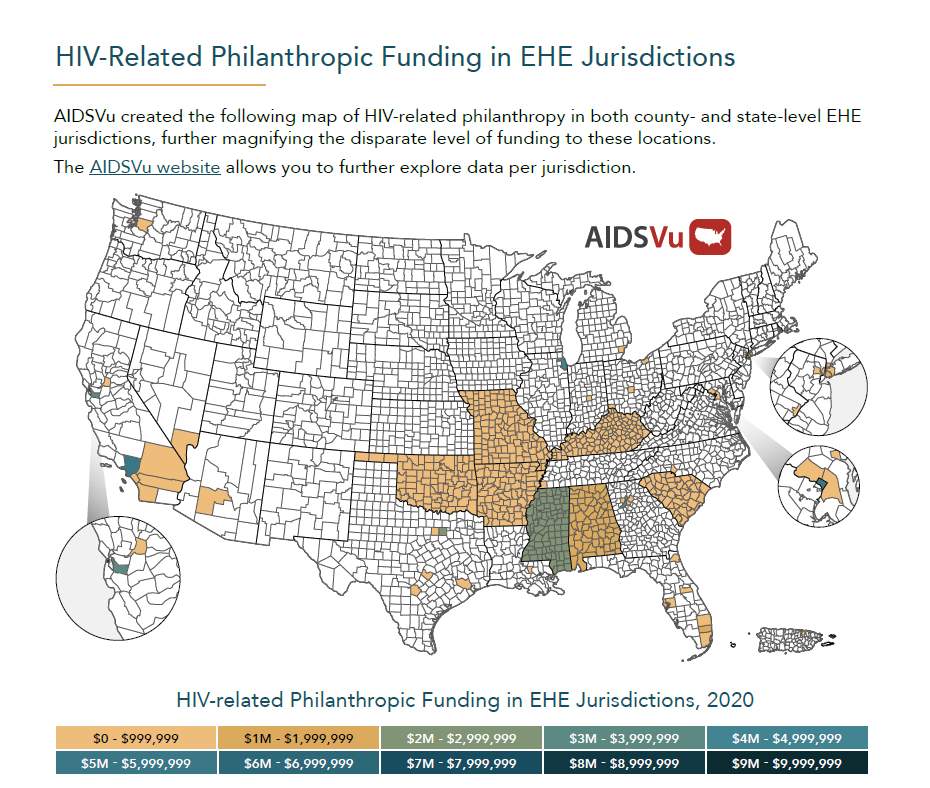
Funders Concerned About AIDS (FCAA)
As a part of AIDSVu’s effort to partner with organizations across the HIV space, in 2022 AIDSVu added data on HIV-related philanthropic funding to our EHE profiles. The data comes from FCAA’s signature resource tracking report, of which the most recent edition — based on calendar year 2020 grant making — captures data on more than 5,000 grants, awarded by 323 foundations in 10 countries, in an effort to identify gaps, trends, and opportunities in HIV-related philanthropy. These data were updated to 2023 this year.
In addition to aggregate funding totals, FCAA analyzes HIV philanthropy by top funders, geographic locations of impact, populations served, and intended use or strategies of funding. The report, including historical versions dating back to the year 2000, can be found on their website, as well as deep-dive infographics on varying topics and other research reports on the impacts of COVID-19, and community-rooted intermediary funders on the field of HIV philanthropy.
Check out AIDSVu’s profiles to see the data for each EHE county and state.

